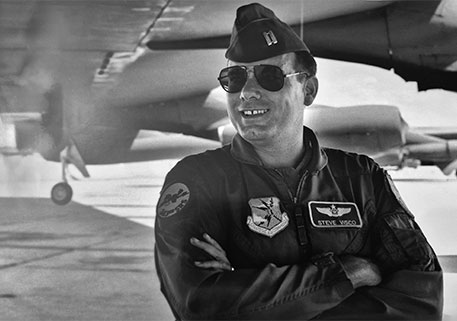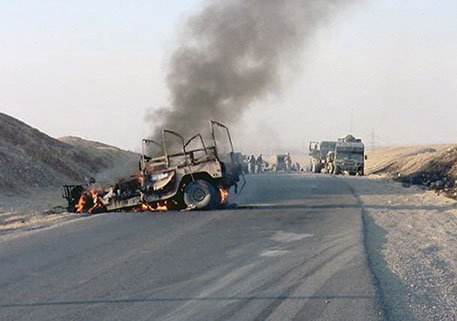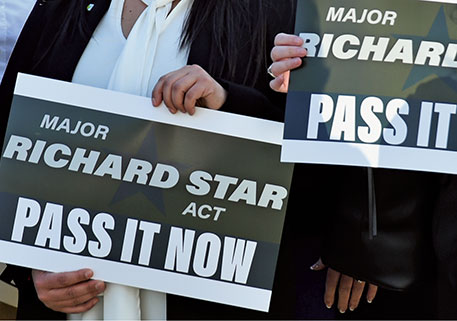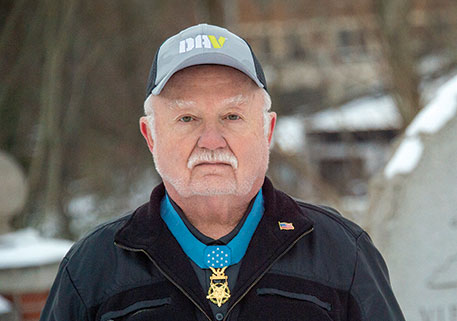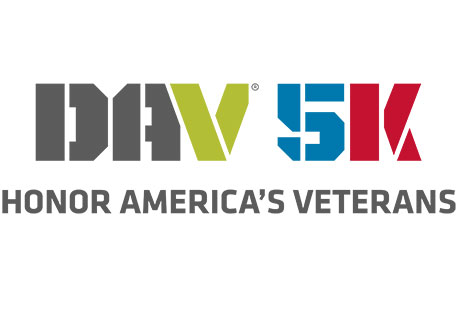After hiking from Maine to Georgia, Army veteran completed 2,100-mile trek on Veterans Day
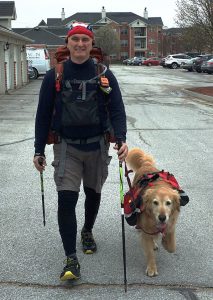
In March, we featured DAV Life Member and retired Army chief warrant officer Keith Wingad who was planning to hike the entire Appalachian Trail. In a fitting Veterans Day tribute, Wingad completed his thru-hike on Nov. 11.
Wingad trekked 2,100 miles over the course of 6 months raising both money and awareness for disabled veterans. DAV Magazine interviewed Wingad after his hike as he shared the ins and outs of his trek and the lessons he brought back from the journey.
What was the most challenging aspect of hiking the Appalachian Trail?
“The length of the Trail and all that goes with it. Things like, extreme weather, limitless rocks and roots to circumvent, daily mountains to climb and descend, loneliness, time away from home, doubt about the decision to be on the Trail and my physical limitations that hindered my ability to hike on.”
What thoughts went through your mind when you had to get help along the way?
“I returned to Omaha and our fantastic VA medical facility three times over the course of my more than six-month hike. The first time, I became depressed. I had wrenched my knee while hiking in the steady, cold rain going down a hill in New Jersey. I had barely gone 300 miles and found myself off the trail. The doc drained the fluid from the knee and gave me some steroid shots to help. It worked, and though I was tempted to call it quits, I headed back.”
“The second time off the trail was just after I had climbed Mount Katahdin in Maine, the northern terminus of the trail. By now my trail legs were well prepared, so all I needed was my knees drained from excess fluid and another round of steroids. I looked forward to seeing the medical team who had been keeping me moving forward. The staff was definitely invested in helping me reach my goal. We were more than just doctor and medical staff and patient, we were a team with a common goal: a thru-hike of the Appalachian Trail.”
“Finally, I made one more trip home, in late September. My trip home then was for the same course of VA care, draining the knees of excess fluid and another round of steroid shots. I was confident these would be enough to get me to the end of my hike, another 400 miles.”
Did you meet any interesting people on the trail and if so, can you tell us about your top two or three?
“The most interesting two people I met were Dale ‘Grey Beard’ Sanders and Pearl ‘Sweet Spot’ Wapner. Dale is an 82-year-old man who completed his thru-hike in October, becoming the oldest person to conquer the feat. Sweet Spot and I met on four separate occasions throughout the course of our hikes. She is easily identifiable because she wore the same $7.95 pair of flowery swim trunks for the entire trek. You could see her coming from
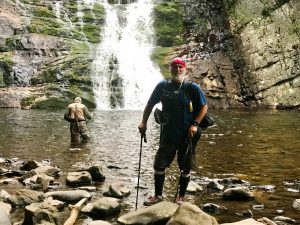
a mile away with her signature outfit.”
“In addition to Grey Beard and Sweet Spot, the trail culture offers two very important groups of people: Trail Angels and other hikers who can, in fact, be angels in their own way. You never know when those angels will come but invariably they come at just the right time. The other group, the hikers themselves, are magnificent. Mostly young and full of life with body parts that still work correctly. We all quickly develop a camaraderie with each other.”
What would you say to your fellow disabled veterans who may be looking for ways to push themselves?
“I suppose my [Appalachian Trail] adventure was, in the end, about discovery and experiencing life. In the beginning, my hike placed both physical and mental demands on me that impeded my ability to discover and experience the adventure, but in time as my body and soul adjusted I was able to see and feel the awe of nature. Personal as one’s trail experience is, the bottom line is that all of us who find ways to experience life outside our current context are richer for it.”
Anything you’d like to add?
One important addition pertains to healthcare for veterans. I receive all of my care at the VA hospital in Omaha. Like most, I would go in as needed and get the treatments, medications and screenings and that was that. The hospital in Omaha does a good job providing all of that and I am grateful to doctors and medical staff there. What I discovered in preparation for my [Appalachian Trail] hike, however, is that the VA and its medical staff are willing to do more if you ask. In my particular case, I was told I had ‘ugly’ knees that required replacing. Since the trail, we look at my medical care thru a different lens, a lens of possibility and what ifs. The VA is a good place for care and I discovered that it can be great when I explored what it has to offer.”
“One final note, in the ‘where there’s a will there’s a way’ category; I met two amputees who were attempting a thru-hike and though I do not know if they finished, I do know that a female double amputee veteran did so a couple of years ago. I know that a blind man also finished the hike. It boggles my mind that they were able to do so but they did and it is simply amazing.”
Pushing limits is something veterans are accustomed to and Wingad embodied that spirit by completing a task at 66-years-old that many people half his age would struggle to finish. In addition to completing the Appalachian Trail, Wingad raised thousands of dollars for Nebraska veterans and awareness for veterans organizations like DAV.

